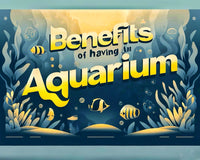Spider Conchs: The Unique Snail Species
Reef aquariums are home to a myriad of fascinating creatures, each contributing uniquely to the ecosystem’s balance and diversity. Among these intriguing inhabitants, spider conchs stand out due to their distinct appearance and captivating behavior. This article will delve into the unique appearance, behaviours, and role of spider conchs in a reef tank.
What Are Spider Conchs?
Spider conchs belong to the family Strombidae and are scientifically known as Lambis spp. These marine snails are named for their elongated, spider-like appendages that protrude from the shell, giving them a distinctive and somewhat eerie appearance. Native to the Indo-Pacific region, spider conchs are found in sandy and coral rubble areas of reefs.
Key Characteristics:
• Appearance: Spider conchs are known for their unique, elongated shells with multiple finger-like projections. These projections, or “spines,” help them blend into their surroundings and deter predators. The shells often exhibit vibrant colours and intricate patterns, ranging from orange and red to white and brown.
• Size: Depending on the species, spider conchs can grow to sizes ranging from 4 to 12 inches (10 to 30 cm).
• Behaviour: These snails are active grazers and are known for their unique method of locomotion, using a specialised foot to “hop” along the substrate.
Unique Behaviours and Adaptations
Spider conchs possess several fascinating behaviours and adaptations that make them stand out in the reef environment:
1. Locomotion:
• Unlike most snails that glide slowly across surfaces, spider conchs use a muscular foot equipped with a hook-like operculum to push off the substrate and “hop” forward. This unique mode of movement helps them quickly navigate the reef and avoid predators.
2. Feeding Habits:
• Spider conchs are primarily herbivores, grazing on algae, detritus, and other organic matter on the substrate. They use their long, extensible proboscis to reach into crevices and feed on biofilm and microalgae.
3. Defence Mechanisms:
• The elongated spines of spider conchs serve as a deterrent to predators, making it difficult for them to be swallowed or attacked. Additionally, their vibrant and patterned shells provide camouflage among the coral and rubble.
4. Sensory Adaptations:
• Spider conchs have well-developed eyes on the ends of long stalks, allowing them to effectively scan their environment for predators and food sources.
Role in a Reef Tank
Spider conchs play a beneficial role in maintaining the health and balance of a reef aquarium:
1. Algae Control:
• As active grazers, spider conchs help keep algae growth in check. By feeding on various types of algae, they contribute to maintaining clean tank surfaces and preventing algae from overgrowing corals and other organisms.
2. Detritus Removal:
• Spider conchs also consume detritus and organic matter, reducing the accumulation of waste that can degrade water quality. Their scavenging helps maintain a cleaner and healthier tank environment.
3. Aeration of the Substrate:
• The “hopping” locomotion of spider conchs helps aerate the substrate, preventing the buildup of harmful gases and promoting a healthy sand bed.
Care and Maintenance in Reef Tanks
Keeping spider conchs in a reef tank requires attention to their specific needs and environmental conditions:
1. Tank Setup:
• A well-established reef tank with ample live rock and a sandy substrate is essential for keeping spider conchs. They require space to move and forage, so a minimum tank size of 50 gallons is recommended.
2. Water Parameters:
• Maintain stable water conditions with temperatures between 72-78°F (22-26°C), salinity levels of 1.023-1.025 specific gravity, and a pH of 8.1-8.4. Regular water changes and efficient filtration are crucial to keep the environment clean.
3. Feeding:
• While spider conchs will naturally graze on algae and detritus in the tank, it may be necessary to supplement their diet with algae wafers or blanched vegetables like spinach and lettuce, especially in tanks with low natural algae growth.
4. Compatibility:
• Spider conchs are peaceful and can coexist with a variety of reef-safe fish and invertebrates. Avoid housing them with aggressive or predatory species that may harm them.
5. Monitoring and Maintenance:
• Regularly monitor the condition of the substrate and the health of the conchs. Ensure they are active and feeding properly. Their unique locomotion and grazing habits make them relatively easy to observe and care for.
Benefits of Keeping Spider Conchs
Adding spider conchs to your reef aquarium offers several benefits beyond their cleaning abilities:
1. Unique Aesthetic:
• The intricate and vibrant shells of spider conchs, along with their unusual appearance, add visual interest and diversity to the tank, enhancing its overall aesthetic appeal.
2. Low Maintenance:
• Spider conchs are hardy and require minimal care, making them suitable for both novice and experienced reef keepers.
3. Ecosystem Balance:
• By controlling algae, removing detritus, and aerating the substrate, spider conchs contribute to a balanced and healthy reef ecosystem.
Conclusion
Spider conchs, with their distinctive appearance and fascinating behaviours , are a valuable addition to any reef aquarium. Their role in maintaining clean tank surfaces, removing detritus, and aerating the substrate highlights their importance in the ecosystem.
By understanding their needs and providing proper care, aquarists can enjoy the unique presence of these remarkable snails and enhance the health and beauty of their underwater environment. Whether you are an experienced reef keeper or new to the hobby, incorporating spider conchs into your aquarium can promote a diverse, resilient, and aesthetically pleasing reef ecosystem.












